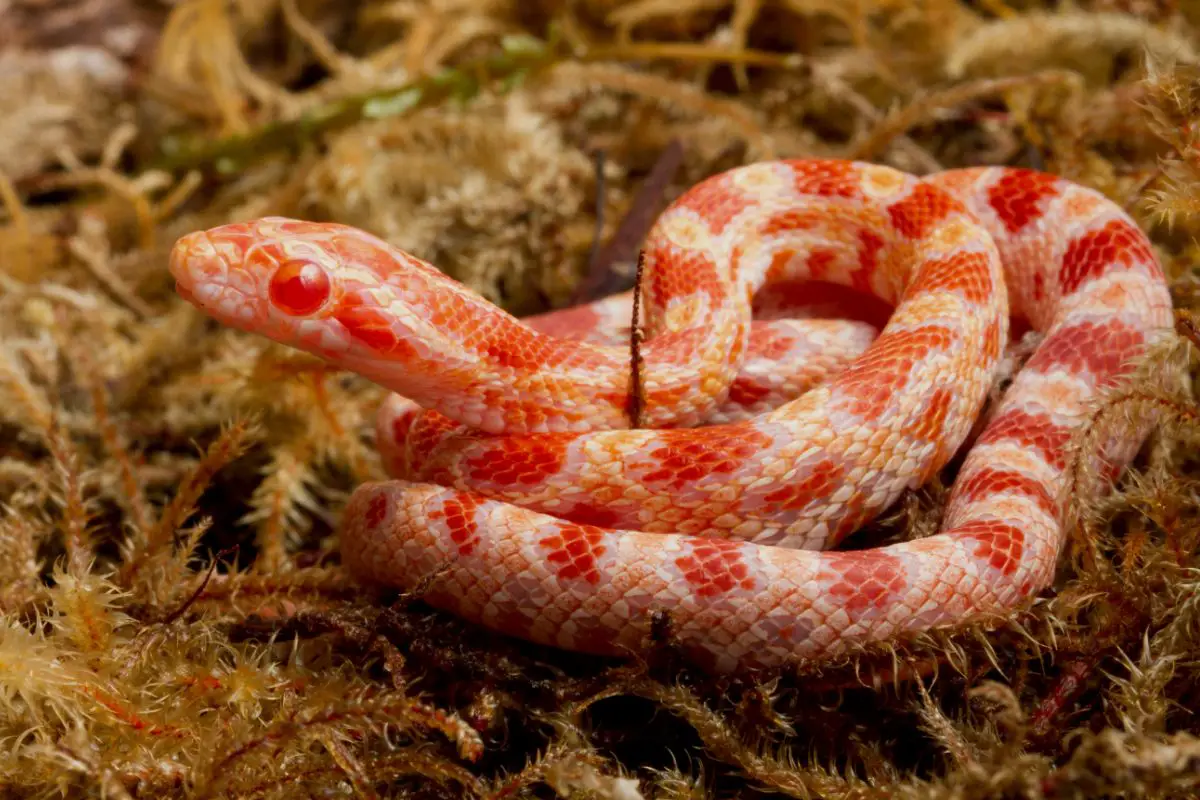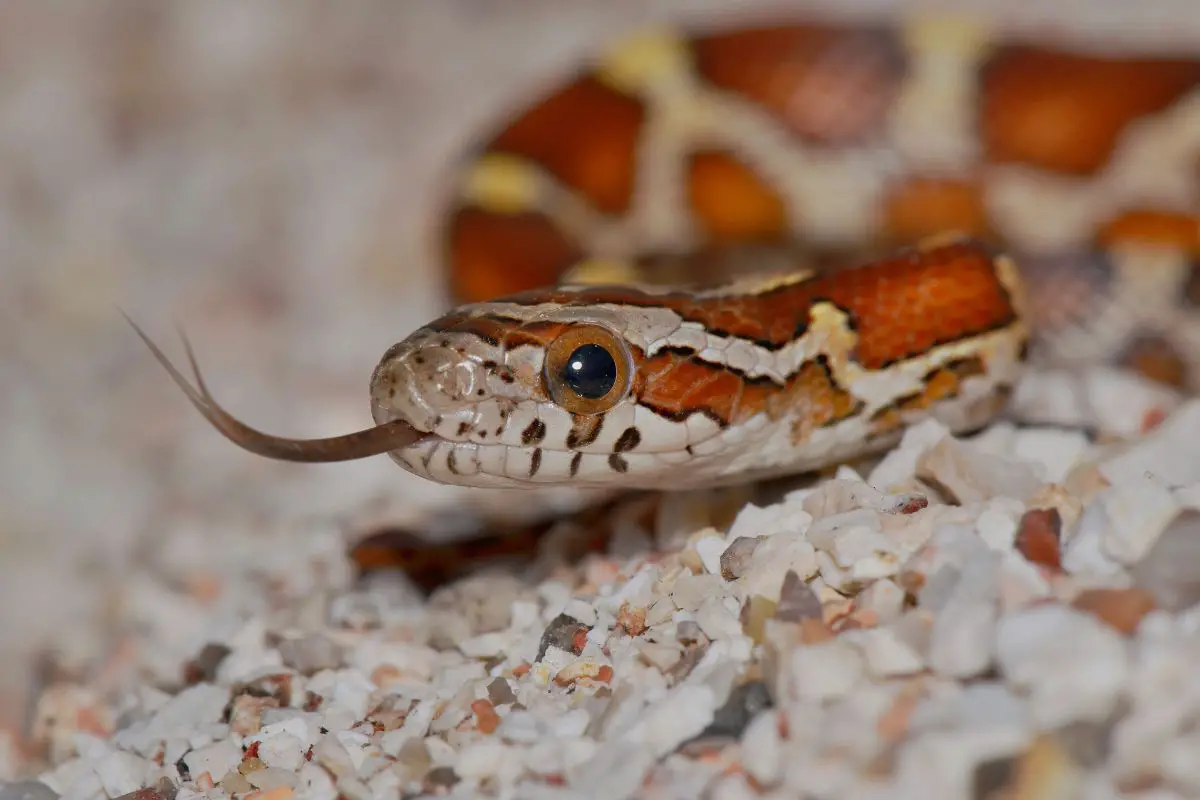Choosing the correct mouse size for feeding your corn snake is vital to its health and development, but it can be challenging to determine the right size to avoid choking, regurgitation, or underfeeding. Whether your snake is 2 months old or 1 year old, providing the appropriate size of mouse ensures it receives adequate nutrition. This article offers practical advice and guidelines to help you confidently select mouse sizes tailored to your corn snake’s specific growth stage. Whether you’re a new owner or looking to refine your feeding regimen, understanding these principles will ensure your snake thrives on a balanced diet.
I have a corn snake that is almost 3 years old, and I use my experience to help others care for their snakes.
Mouse Size Chart
| Mouse Size | Description | Age (weeks) | Length (in) |
|---|---|---|---|
| Pinky | Newborn mouse, suitable for young snakes | 0-1 | 0.5-1 |
| Fuzzy | Slightly older than pinkies, still very small | 1-2 | 1-1.5 |
| Hopper | Young mouse that has just started to eat solid food | 2-3 | 1.5-2 |
| Weaned Mouse | Fully weaned from mother’s milk, smaller than adult mice | 3-4 | 2-2.5 |
| Small Adult Mouse | Adult mouse that is smaller in size, suitable for juvenile snakes | 6-8 | 2.5-3 |
| Medium-Large Adult Mouse | Larger adult mouse, suitable for fully grown corn snakes | 8-12+ | 3+ |
You can find more information about mouse sizing here
1. 0-3 Months
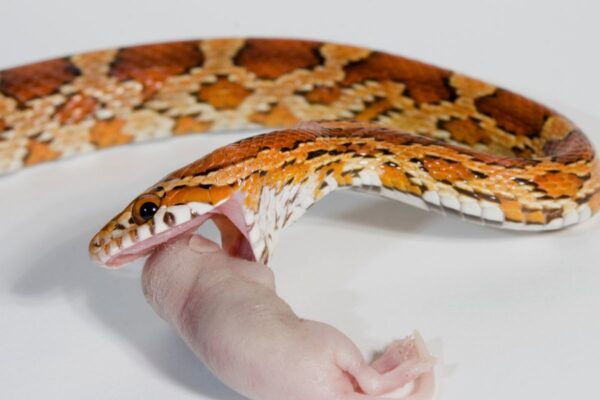
For a young snake, they typically eat pinky mice to fuzzy mice. They usually start with pinkies and work their way up to fuzzy mice soon after. This can vary between corn snakes though. In my case, I kept with pinkies for a few months until my snake was large enough for fuzzies.
For hatchlings up to 3 months, the size of a corn snake can range from 8-12 inches long, and are normally 6-8 grams.
2. 3-6 Months
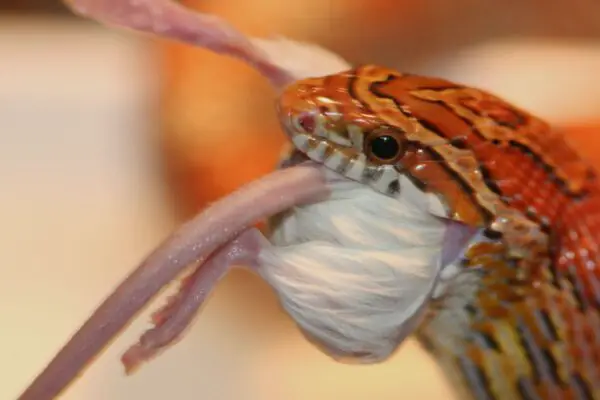
A 3-6 month old snake normally sticks with fuzzies, but in certain scenarios, they can move up to hoppers. Some corn snakes grow faster than others.
For young snakes up to 6 months, they are typically 12-20 inches long, and about 25-30 grams
3. 6-8 Months
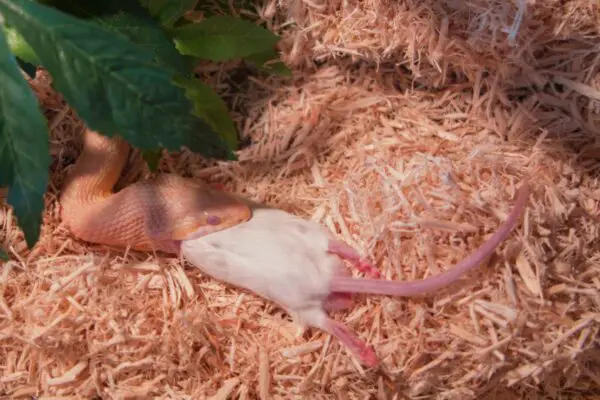
A 6-8 month old snake would typically move up to hoppers or even weaned mice in certain scenarios. In my case, my snake was still on hoppers at this point.
Snakes up to 8 months are normally 20-30 inches long, and 30-60 grams
4. 8-12 Months
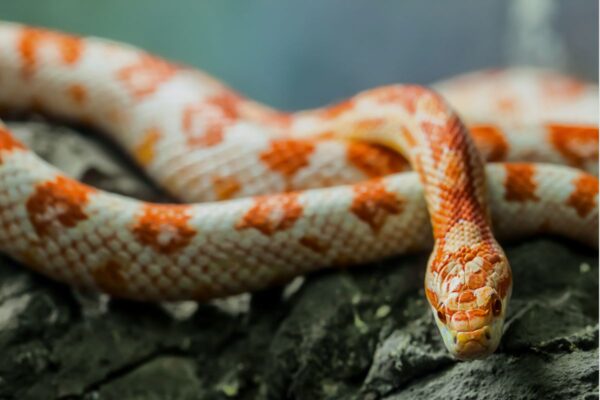
By this point in a snake’s life, they have grown a lot more, but snakes normally take 3-4 years to fully mature. An 8-12 month-old snake would typically eat weaned mice, and in very rare scenarios, they can eat small adult mice. My snake was still on weaned mice for comparison.
Corn snakes a year old are typically around 30-40 inches long, and 60-100 grams.
5. 1 year+
Your corn snake is likely not done growing at 1 year, but they shouldn’t grow too much more and will grow slower. Corn snakes at this age could range from a weaned mouse to a small adult mouse in some scenarios. Very rarely, if ever, do corn snakes need large adult mice, but you may never know.
Before choosing a size, remember that these are just averages of what sizes corn snakes will eat. The best way to determine the appropriate size for your corn snake is to measure the thickest part of your snake’s body and multiply it by 1.5 to find the ideal rat size. As they age, rely less on this method and more on using 8-10% of their body weight to decide the mouse size.
Typically, corn snakes would never need a rat and sometimes not even an adult mouse. Corn snakes can range from 3 to over 5 feet in length, and weigh up to 900 grams, so they don’t grow as large as Boa Constrictors or other snakes.
Live or Frozen?
After determining what size mouse you should feed your corn snake, you may now be wondering whether you should feed live or frozen mice. In the next section of the article, I will discuss the pros and cons of feeding live versus frozen.
Feeding Live
Feeding live mice is not typically the first option, but some people choose to do so to mimic a snake’s natural habitat. Personally, I do not recommend feeding your snake live mice for several reasons. Firstly, feeding live is less humane for the mice, although it does replicate how a snake would kill prey in the wild. Additionally, obtaining live mice for feeding can be more challenging and expensive, although some people breed their own mice. Another concern is that in certain cases, the mouse may fight back and potentially harm your corn snake. They can bite the snake’s scales and seriously injure your pet. If you decide to feed live prey, always supervise the feeding to ensure the mouse does not pose a threat.
Feeding Frozen
Feeding frozen mice is the first choice for most people, as it is easier and more humane. Frozen mice are also readily available at most exotic pet stores. When feeding frozen mice, you must ensure the mouse is completely thawed out before offering it to your snake. They are humanely killed using CO2 asphyxiation or by quick suffocation using dry ice. Another benefit of feeding frozen mice is that there is no risk of the mouse fighting back, which makes it safer for your snake and easier for you to handle. Your corn snake doesn’t really care whether their feeding resembles their habitat, as they have never been wild and can’t really tell the difference.
When feeding your snake, remember to keep them on a schedule. When they are younger, you can feed them about every week, and as they get older, they can go longer between meals. You can continue to feed them weekly or extend their feeding schedule.
